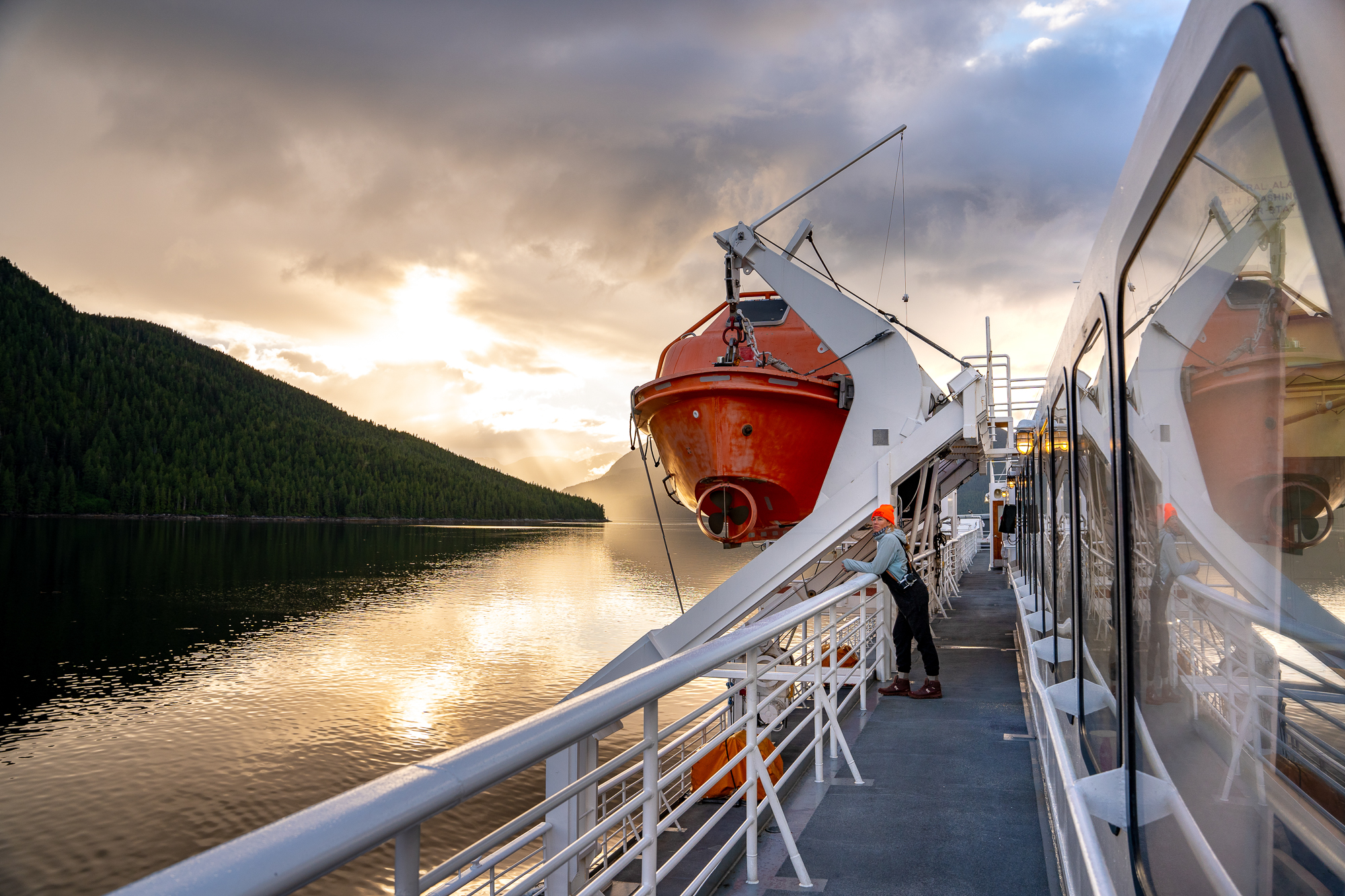Editor’s Note: This article was originally published in Overland Journal’s Gear 2023 Issue.
The road has been our home for the last six years. During that time, we’ve relished getting to know the intimate details of North America through its winding dirt roads and small towns. Like any travelers, we have goals and bucket list destinations that are always sitting in the forefront of our minds. One, in particular, had captivated our imagination for as long as we could point to it on a map and was the last stone we needed to overturn before starting our travels on other continents: Alaska.
Enough was enough. We put the Last Frontier on our schedule for the summer of 2020. I don’t need to fill you in on what happened in 2020. Everyone’s plans had to be put on the back burner. During that year, we did what we could by venturing into familiar places while always keeping our eyes trained to the north.
As the world started to find a sense of equilibrium at the beginning of 2021, we knew we had to make another attempt at making our way to Alaska. The only problem was that the US and Canadian border was still closed to non-essential travel. However, there was still one way to get there that wouldn’t require crossing any borders, the Alaska Marine Highway. Simply put, we needed to take the ferry to Alaska.
With one-way ferry tickets in hand, one for us and one for our rig, Roxanne—a 2019 Toyota Tundra with a flatbed Four Wheel Camper—we pulled into the ferry terminal’s queue. The bevy of vehicles in front of us was a showcase of refrigerated trucks, campers of all shapes and sizes, boats on trailers, commuter vehicles, motorcycles, bicycles, and even persons on foot.
People freely walked around waiting to board the ship, including the couple with a camper in front of us. They had an air of experience about them, so I did what I always do, hopping out of our truck to strike up a conversation. They were kind and generous with their knowledge and happily gave us information about the Alaska Marine Highway. While we talked, the man pulled out a backpack and said he planned to board with the walk-on passengers to secure their spot.
The spot he was referencing is something that makes this voyage truly special. Though there are cabins with basic amenities (for a fee) aboard the ferry, you don’t have to use them. Instead, you can choose to sleep in one of the many lounge areas, on the top deck of the ship on lawn chairs, or in your tent.

Leading up to this trip, I’d done a great deal of research yet was still left wanting more. However, I did find two important pieces of information about alternative sleeping accommodations:
- If camping on deck is what you desire, know that you’re in great company. Competition can be stiff when it comes to procuring a space to pitch your tent.
- Do yourself a favor and bring a roll of duct tape so you can adhere your tent to the deck. If not, you stand a chance of losing it overboard in a strong wind.
“Now boarding all walk-on passengers!” A friendly Australian-accented voice announced from the ship’s speaker system. I turned and looked back at my new, experienced ferry friend and said, “Well, it sounds like I should join you then!”
Loaded down with our tent, sleeping bags, and a fresh roll of duct tape, I waved to Owen—who I left sitting in Roxanne’s driver’s seat—and made my way toward our ship, the mighty Matanuska.
Eventually, I found the top deck, home to the open-air solarium and assigned tent camping. I quickly freed our tent and duct tape from my pack and got to work setting up our camp.
I usually love our ultralight backpacking tent. However, setting it up by myself in the wind without the tent stakes, which is crucial to its structural integrity, turned into a wrestling match. The deck was so hot from baking in the afternoon sun that it was burning my butt through my pants and melting the usually indestructible tape’s adhesive.
Alas, one hour and nearly an entire roll of duct tape later, I managed to adhere our uncooperative tent to the deck just as Owen arrived from around the corner. He came with the rest of the camping gear, having safely tucked our rig into her spot below deck. People drifted by to express their congratulations on getting the tent up successfully. Apparently, onlookers had started to worry about the sweaty lady with the uncooperative tent.
With our temporary home complete, we settled into our lawn chairs to take in our last views of the Lower 48 for the summer. The Matanuska cast off, and our journey north was underway.
Our passage on the Alaska Marine Highway left from Bellingham, Washington, and would carry us nearly 1,000 miles north to Juneau, Alaska. The intricate course is known as the Inside Passage, a narrow network of corridors through the islands on the Pacific Northwest Coast of North America. Most of the land we’d see is completely inaccessible by land.
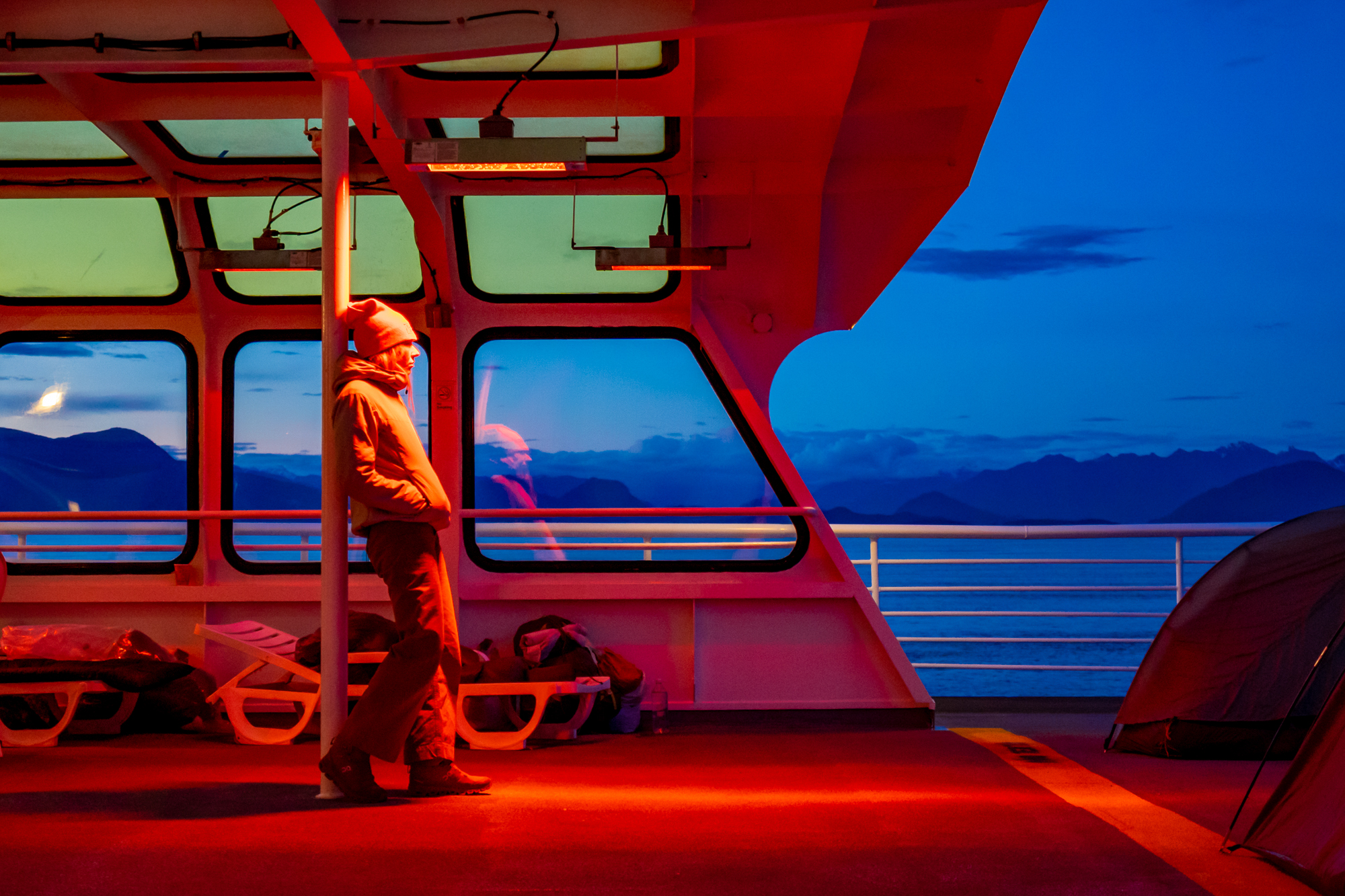
We quickly settled into what would become our routine for the next two days and 12 hours. We moved around the boat but kept our eyes trained on the horizon, taking in the ever-changing landscape. Before we knew it, our stomachs reminded us it was time for dinner.
We grabbed the Cup Noodles we had brought and headed down to the cafeteria to eat.
The cafeteria-style restaurant serves three meals a day that cost anywhere from $6 to $15 a portion and varies from pancakes to pizza. They also offered daily specials like locally caught salmon, though we chose the cheapest option: bringing our own food for most of our meals. Even if you don’t purchase food from the restaurant, you are still allowed access to a microwave, an ice maker, and hot and cold water on tap. This allowed us to prepare the rudimentary meals we brought with us.
After dinner, we sat in our lawn chairs and watched the light slowly drain from the sky. As the Matanuska drifted through narrow corridors framed by islands—so close you could nearly touch them—an overwhelming sense of contentment washed over us. We’d finally made it. Exhausted from the long and exciting day, we crawled into bed.
Surrounded by other tents, the ubiquitous lights of the solarium, and the purr of the engine deep in the belly of the boat, I didn’t expect to sleep very well. But the next thing I knew, it was morning. I opened my eyes to find the soft glow of an overcast day. Owen also had an incredible night’s sleep. That ended up being the trend for our nights on the ferry. As soon as our heads hit the deck every night, we slept like bricks. The hum of the engine, rocking of the boat, and cool salty night air made for the perfect sleeping conditions.
Owen pressed his way out of the tent, quickly turned back to me, and said, “MAK! You need to see this.” I joined him, our still bare feet pressing into the gritty deck. I rubbed my eyes to see a pod of dolphins jumping in the wake of the Matanuska. It felt like we’d somehow woken up inside the pages of a fantasy novel. A light fog partially obscured the tightly packed islands all around us.
With instant coffee in hand, made using the hot water from the cafeteria, we settled back into our post under the heat lamps of the solarium to watch the world go by. We struck up conversations with the other travelers that decided to call the top deck home. It was clear that we were a breed all our own: the ones that had chosen to brave the elements rather than the guaranteed comforts of the lounges. Every person we talked to had an interesting story to tell. Some take the ferry north every year, some were returning to relive a journey they took decades ago, and some were military families moving to coastal Alaska. There were also plenty of people, like ourselves, making the pilgrimage for the first time. The one thing that we all had in common was an infectious excitement for what lay ahead. The sense of community on the ferry made it feel special.
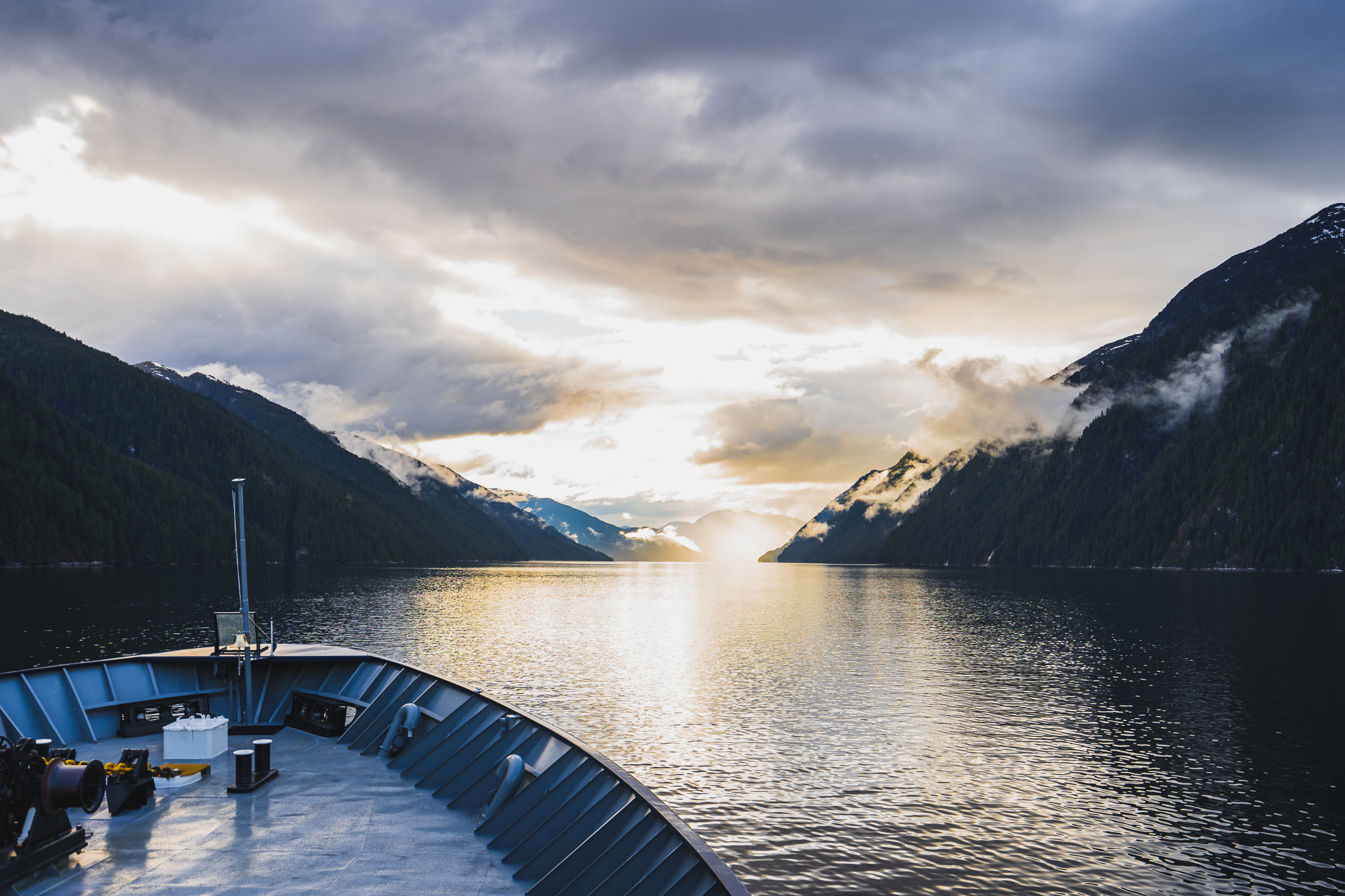
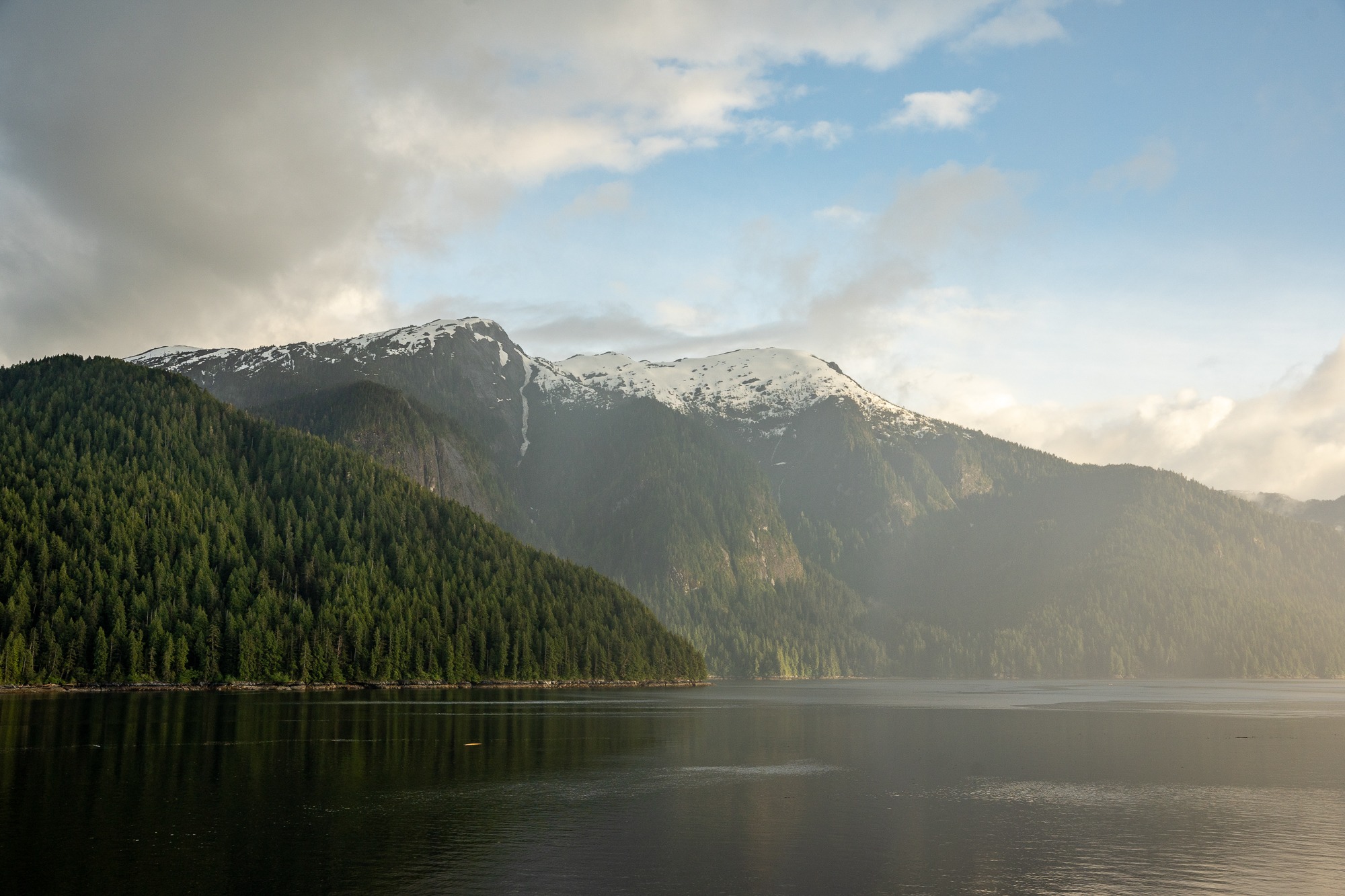
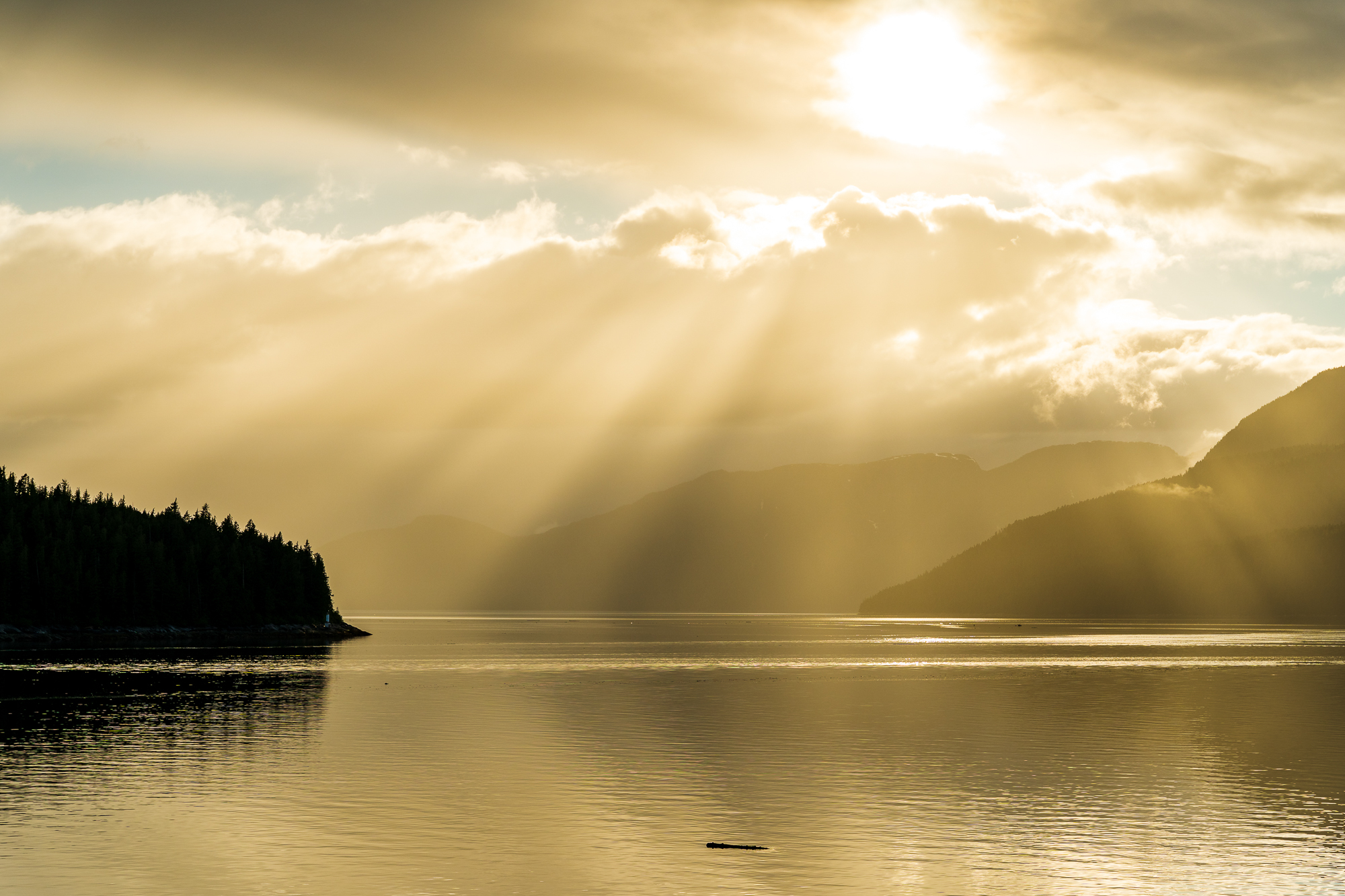
Made in the early 1960s, the Matanuska came complete with antiquated charm. We searched for electrical outlets around the 50-year-old ship but only found a handful. The few outlets we did see were in the lounge areas and were permanently occupied by people who’d decided to set up their camp strategically for access to power. Clearly, they had known something we didn’t.
We boarded the ferry with a pile of work we’d hoped to get done in the idle hours. We took the lack of plugs, WiFi, and cell service as a sign we should put that work aside—a forced but necessary break that we otherwise wouldn’t have given ourselves. Work on the road is both a blessing and a curse.
The Matanuska passed through a rain shower just as the sun was setting. Off the stern, a brilliant double rainbow spanned the tight passage. Off the bow, the setting sun lit up the rain. Seemingly everyone onboard stopped what they were doing to watch the display.
We did our best to stay up until we could see the stars. By 11:00 p.m., the sky was still a warm gradient. It was clear that we were getting close to the land of the midnight sun. With heavy eyes, we called it a night.
At some point in the night, I briefly woke up to the engine’s changing rhythm. I later learned that the engines had to be cut off because we reached an area that was too shallow to pass at low tide. After waiting three hours, the tide rose, and we continued on our way.
We woke up to full daylight at 4:30 a.m. as the town of Ketchikan came into view. It was our first of a few stops along the way. We had a layover and decided to go ashore to grab some breakfast and stretch our legs.
Back out on the water, the chipper Australian accent reported that the car deck would soon be open for 30 minutes. They opened the otherwise locked deck a few times a day, and we used these opportunities to grab food from the rig or whatever we’d inevitably forgotten the last time. This was also when passengers with pets could go down to check on their animals that were sequestered with their vehicles for the duration of the cruise. These periodic visits were also when they’d walk their dogs around the car deck to “go.” I heard many frantic pet owners pleading with their furry friends that, for this rare occasion, they were allowed to go to the bathroom on the floor—poor things.
The rest of the day was a blur of short stops in various ports. Instead of getting off in Wrangell, we decided to get in one last shower before arriving at our port of call the following morning. The Matanuska had showers all over the boat and free towels at the bursar’s office. Not only were the showers free, but the water was hot and had great pressure, things that any traveler can appreciate.
As our final day on the Alaska Marine Highway came to a close, we decided to release our tent from its duct tape bondage and pack it away for the night. Instead, we converted our lawn chairs into beds and settled into our sleeping bags one last time.
The now familiar voice on the intercom broke the silence at 4:00 a.m., announcing that we’d soon arrive at the Auke Bay/Juneau ferry terminal. We’d already been up, stuffing our sleeping bags into our packs.
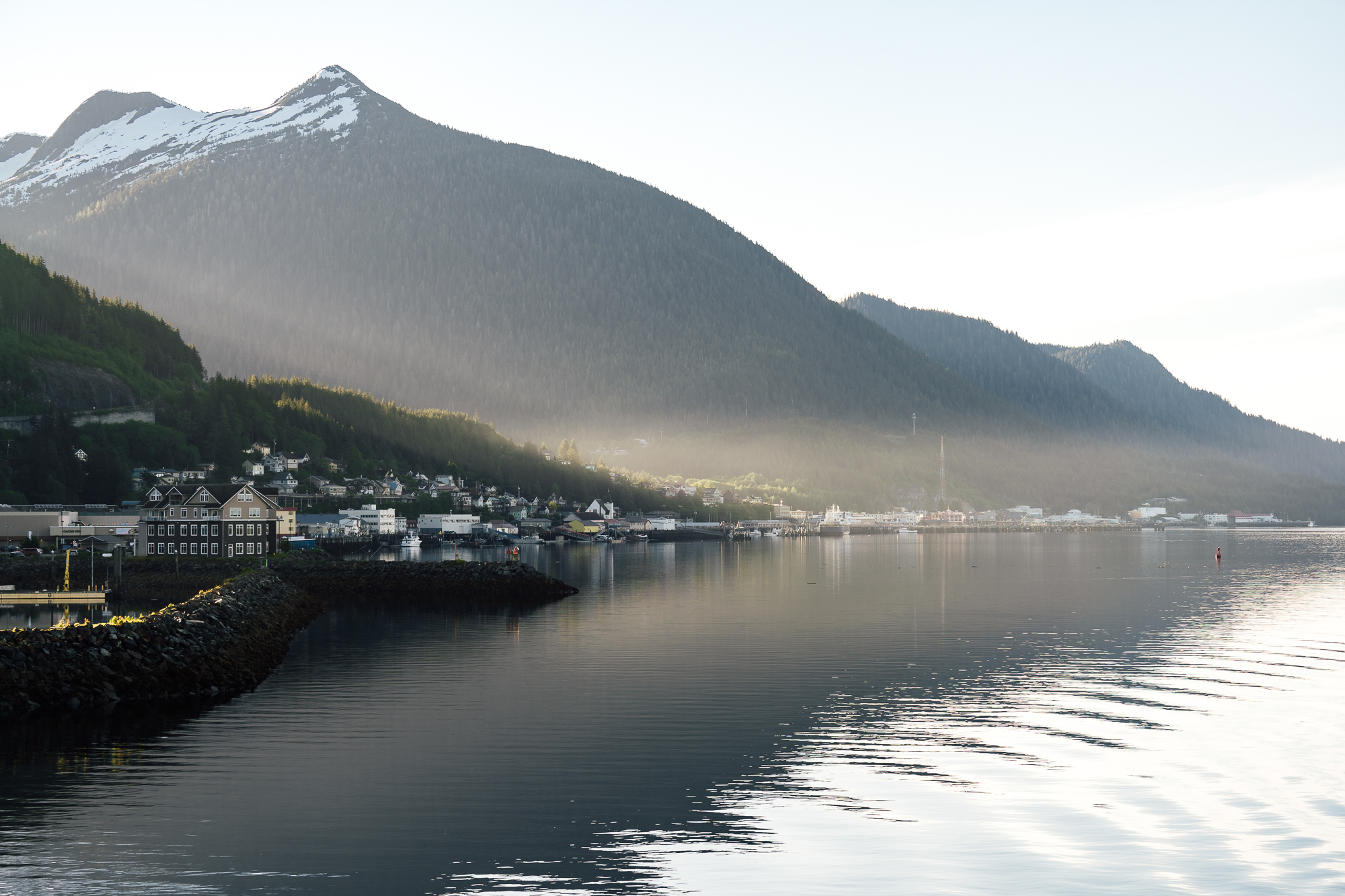
As we watched the lights from Alaska’s capital city dance across the water, we wondered what the next three months would look like for us. We had no idea that soon, we’d get dropped into the Kenai Wilderness by a float plane, spend two days watching the bears fish Brooks Falls, trek across multiple glaciers, wander into an ice cave, watch Denali’s peak emerge from the clouds for a brief moment, jump into a pool of water on the ice, and surf the bore tide.
You have to go out of your way to get to a place like this, but we had a sneaking suspicion that Alaska rewards those who put in the effort.

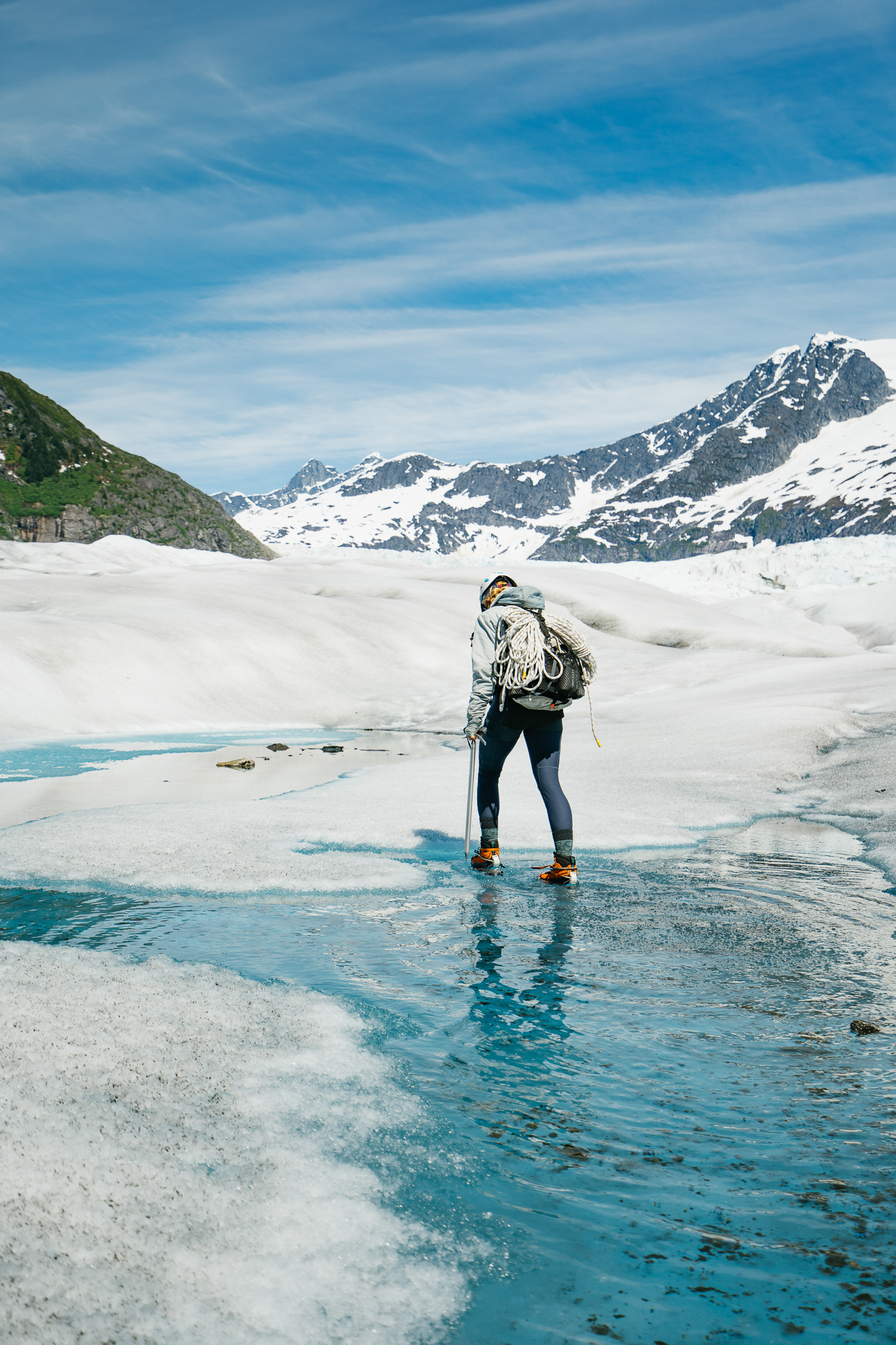
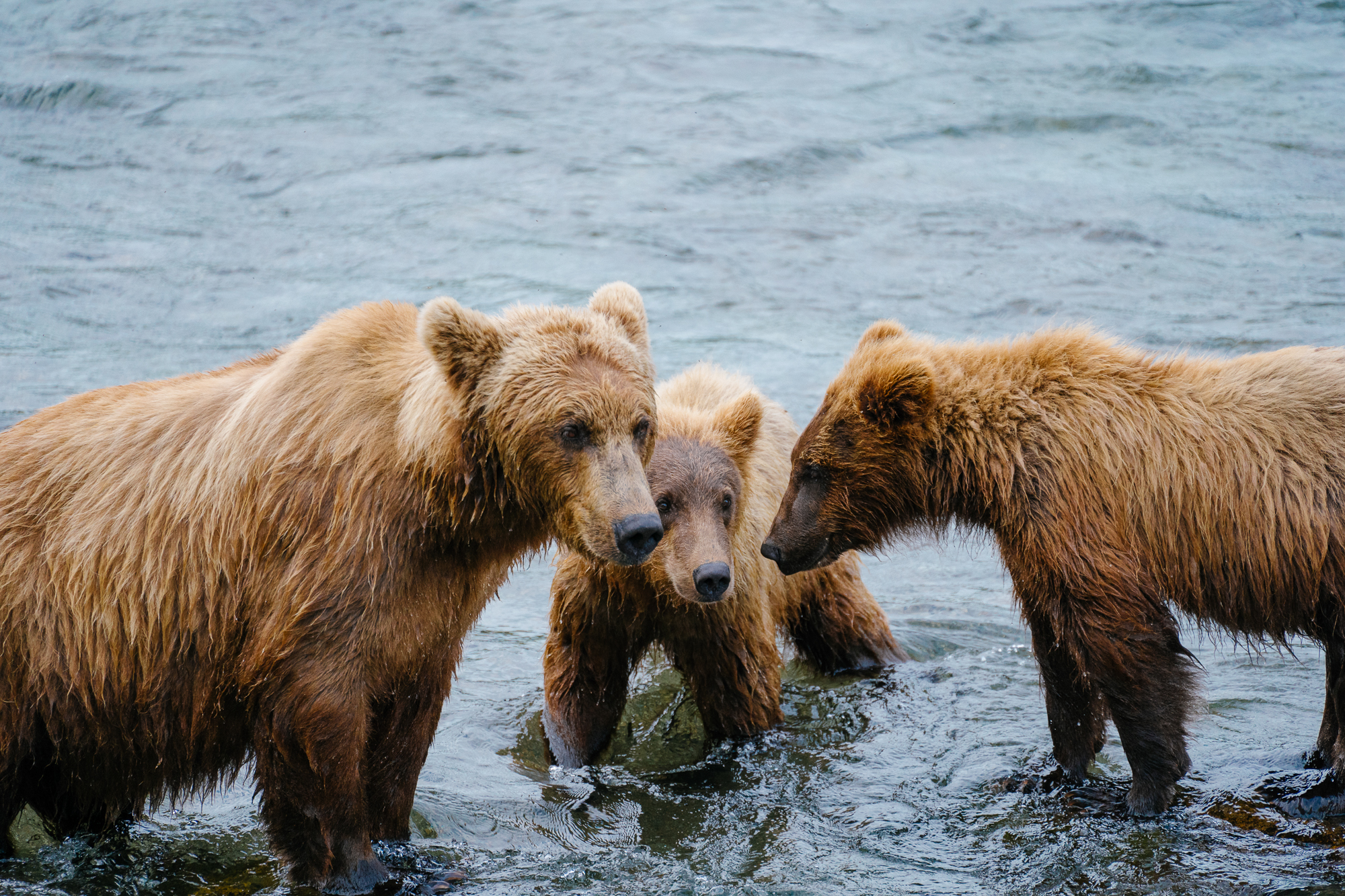
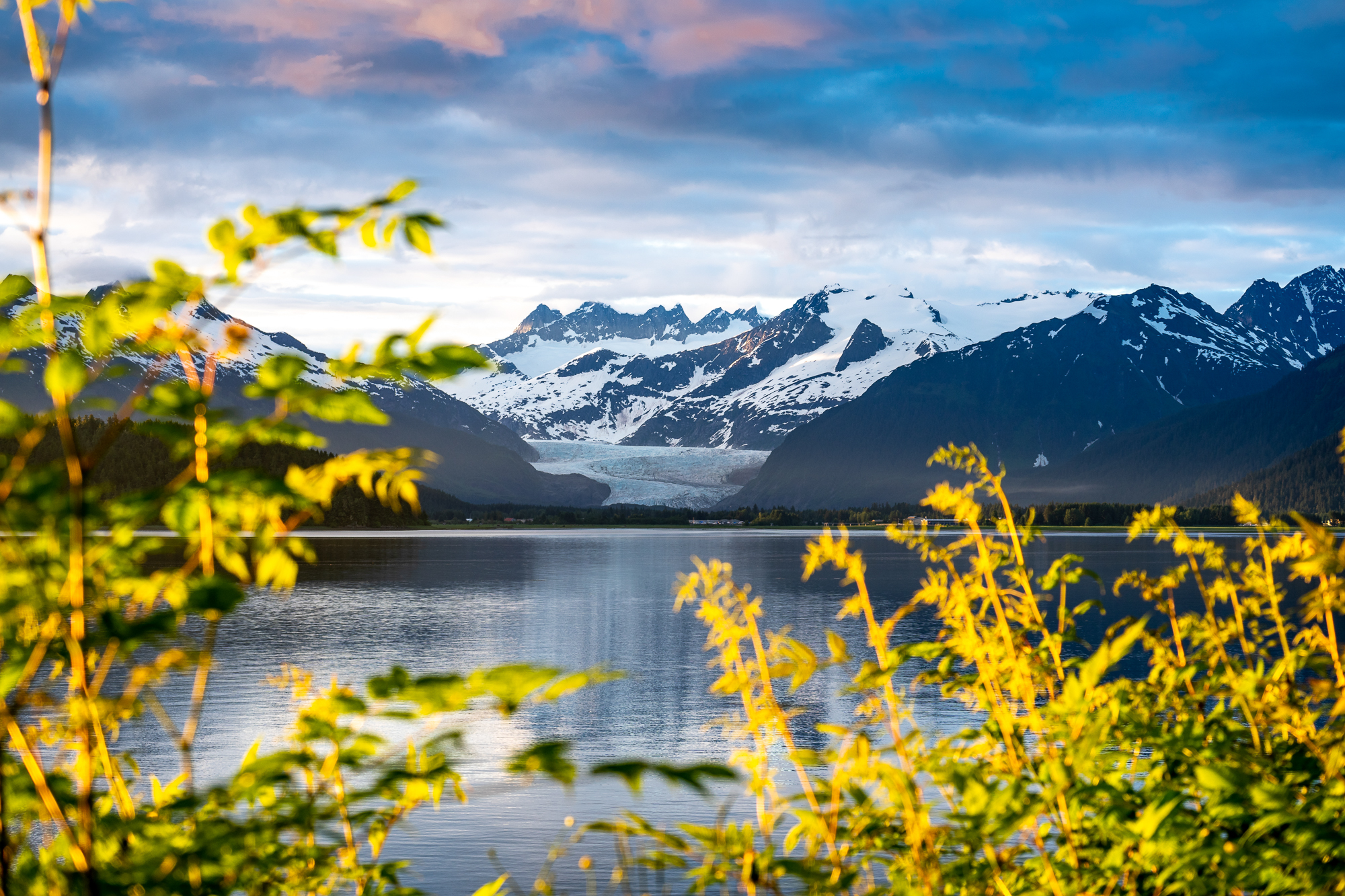


Visit MAK and Owen’s YouTube channel, Bound for Nowhere, for their series on Alaska, including footage on the decks of the Matanuska. You can also find their video of the Kenai Fjords on Expedition Portal. For more about MAK and Owen’s quest for the perfect overland vehicle, exploring Alaska, and realizing childhood dreams, please enjoy Episode 106 of the Overland Journal Podcast.
Our No Compromise Clause: We carefully screen all contributors to ensure they are independent and impartial. We never have and never will accept advertorial, and we do not allow advertising to influence our product or destination reviews.


